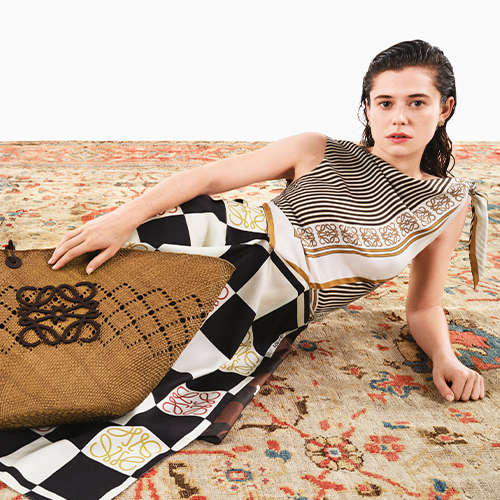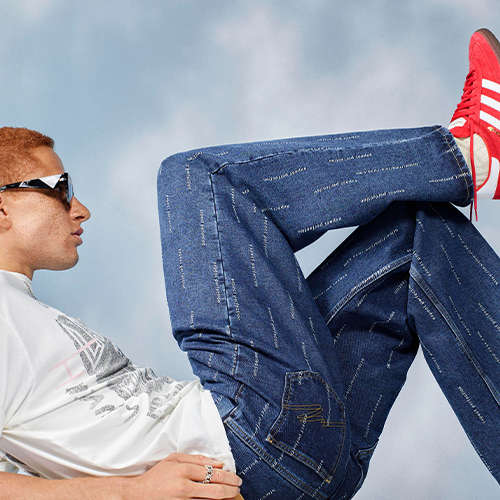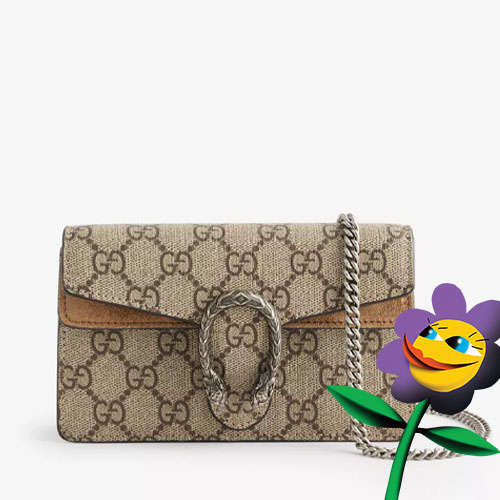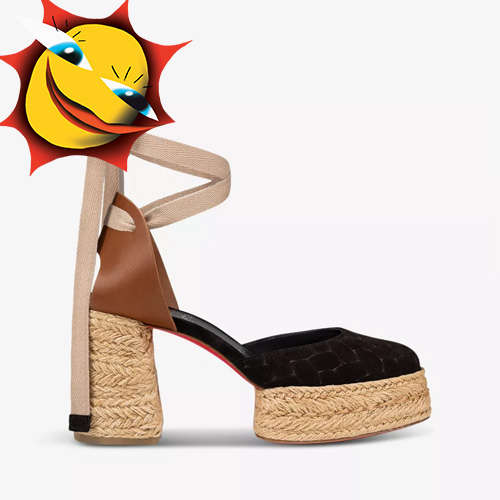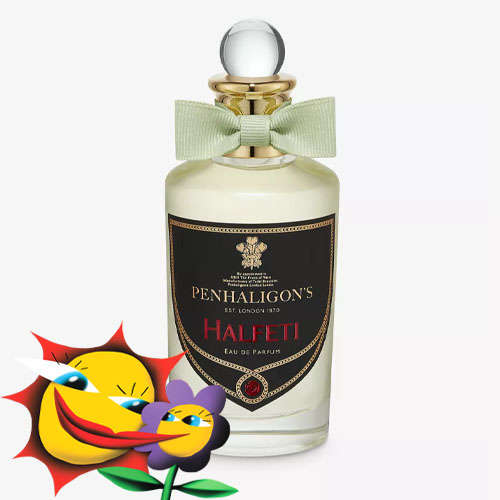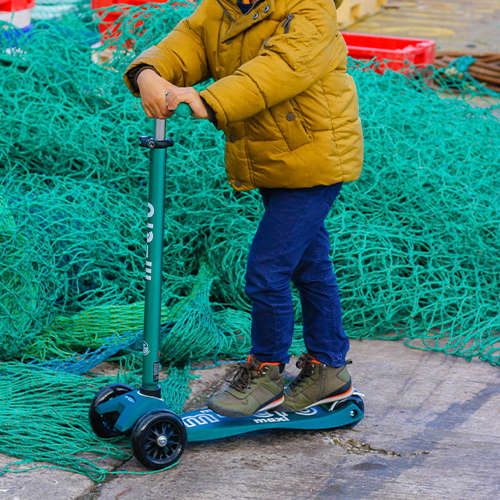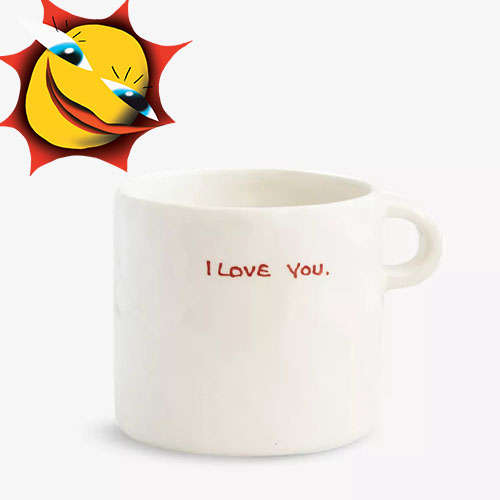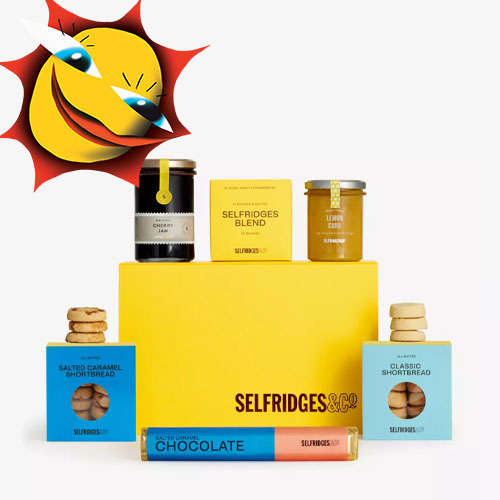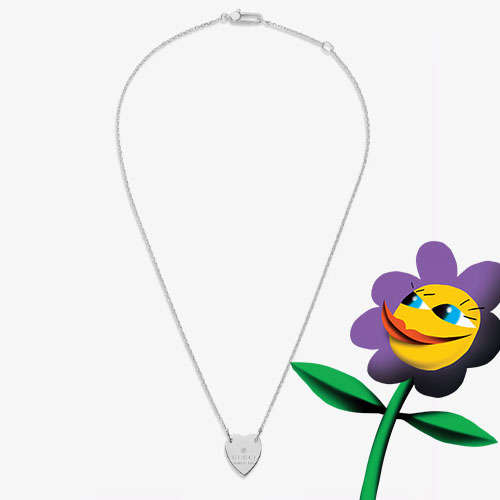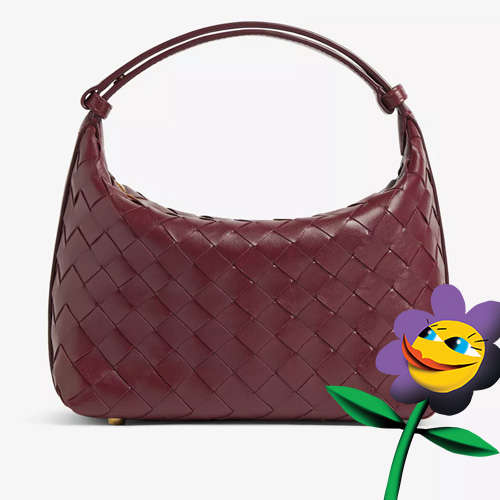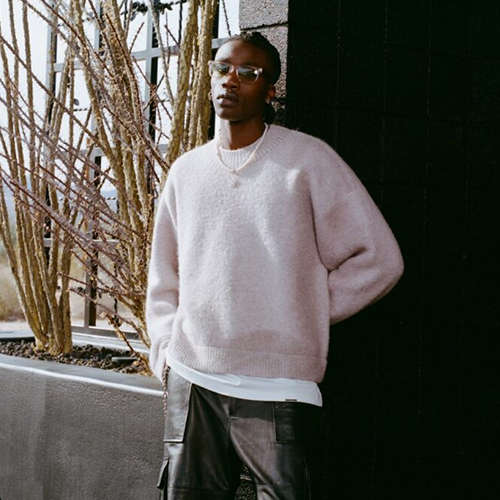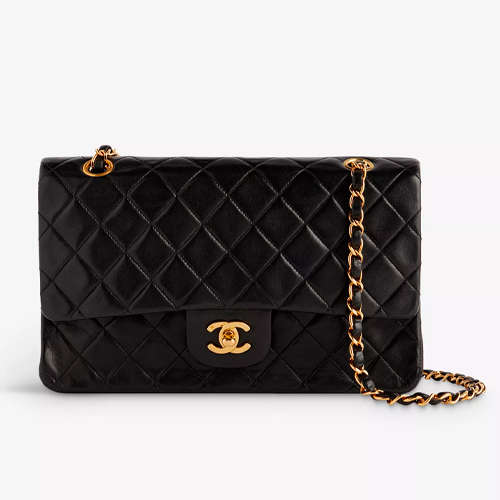- Australia / AUD $
- Canada / CAD $
- China / CNY ¥
- France / EUR €
- Germany / EUR €
- Hong Kong SAR China / HKD $
- Ireland / EUR €
- Italy / EUR €
- Japan / YEN ¥
- Kuwait / USD $
- Macao SAR China / HKD $
- Netherlands / EUR €
- Qatar / USD $
- Saudi Arabia / USD $
- Singapore / SGD $
- South Korea / KRW ₩
- Spain / EUR €
- Taiwan / TWD $
- United Arab Emirates / USD $
- United Kingdom / GBP £
- United States / USD $
- Not yours? Read more
Tell us what you think
Shop in your local currency and language
You are currently in United States US / USD $ store
- English
- English
- English
- English
- English
- English
- English
- English
- English
- English
- English
- English
- English
- English
- English
- English
- English
- English
- English
- English
- English
Did you know that we deliver to 130 countries or regions and offer a range of delivery options to suit you wherever you are in the world? Find out more
Sign up once to our Selfridges+ service and you can enjoy unlimited deliveries wherever you are in the world. FIND OUT MORE
International delivery
With almost everything on selfridges.com available for International Delivery, you can send your order to 130 countries or regions around the world, including North America, Australia, the Middle East and China.
Although we only offer 20 currencies to browse in online, you can still deliver to all of the following countries or regions:
- Algeria
- Andorra
- Antigua and Barbuda
- Aruba
- Australia
- Austria
- Azerbaijan
- Bahrain
- Bangladesh
- Barbados
- Belarus
- Belgium
- Belize
- Bermuda
- Bolivia
- Botswana
- Brunei
- Bulgaria
- Cambodia
- Canada
- Cayman Islands
- Chile
- China
- Colombia
- Costa Rica
- Croatia
- Cyprus
- Czech Republic
- Denmark
- Dominica
- Dominican Republic
- Ecuador
- Egypt
- El Salvador
- Estonia
- Finland
- France
- French Guiana
- Germany
- Gibraltar
- Greece
- Grenada
- Guadeloupe
- Guatemala
- Guernsey
- Guyana
- Honduras
- Hong Kong
- Hungary
- Iceland
- India
- Indonesia
- Ireland
- Israel
- Italy
- Jamaica
- Japan
- Jersey
- Jordan
- Kazakhstan
- Kenya
- Kuwait
- Laos
- Latvia
- Lebanon
- Lesotho
- Liechtenstein
- Lithuania
- Luxembourg
- Macau
- Malaysia
- Maldives
- Malta
- Martinique
- Mayotte
- Mexico
- Monaco
- Montserrat
- Morocco
- Myanmar
- Namibia
- Netherlands
- New Zealand
- Nicaragua
- Nigeria
- Norway
- Oman
- Pakistan
- Panama
- Paraguay
- Peru
- Philippines
- Poland
- Portugal
- Puerto Rico
- Qatar
- Reunion
- Romania
- Rwanda
- Saint Kitts and Nevis
- Saint Lucia
- Saint Martin (French part)
- San Marino
- Saudi Arabia
- Serbia
- Singapore
- Slovakia
- Slovenia
- South Africa
- South Korea
- Spain
- Sri Lanka
- Suriname
- Swaziland
- Sweden
- Switzerland
- Taiwan
- Tanzania
- Thailand
- Trinidad and Tobago
- Turkey
- Uganda
- Ukraine
- United Arab Emirates
- United Kingdom
- United States
- Uruguay
- Venezuela
- Vietnam
-
My Account
- Selfridges Unlocked
- Preferences
- Wish List
- New In
- Women
- Men
- Bags
- Shoes
- Beauty
- Kids
- Home & Tech
- Food & Flowers
- Jewellery & Watches
- Gifts
- Brands
- Reselfridges
Selfridges says
Explore outdoor furniture
-
All mens bags
- Backpacks Messenger bags Tote bags Briefcases Belt bags Wallets Cardholders Travel bags Wash bags
-
All kids bags
- Baby changing bags Boys' bags Girls' bags
-
Shop by brand
- BARBIE BURBERRY GUCCI JELLYCAT LEGO MONCLER ENFANT STEIFF STONE ISLAND TROTTERS UGG SHOP BY BRAND A-Z
Selfridges says
The Project Earth edit
-
Cards & wrap
- Gift wrap Greeting cards
-
By recipient
- Gifts for her Gifts for him Gifts for them Gifts for kids Gifts for pets
-
By price
- Under £75 Under £150 Under £250
-
By occasion
- Mother’s Day Birthday New baby New mum Wedding Anniversary Engagement New home
-
Trending brands
- BIRKENSTOCK CANADA GOOSE CARTIER CHANEL LEGO MARC JACOBS PRADA REPRESENT SELETTI SKIMS
Selfridges says
Our exclusives
-
Shop by category
- Beauty Bags Women’s Men’s Shoes Jewellery & watches Foodhall Kids’ & toys Home & tech Gifts
Selfridges says
Learn about Project Earth
Find out more about our labels
Discover our commitments
| Good as new: repair your most-loved items |
Mother’s Day gifts to make their day. Shop now
My Life in Style with Christian Louboutin
Inside the mind of the Parisian club kid turned world-renowned shoe designer
Words: George Walker
As a teenager, Christian Louboutin filled the champagne flutes of those watching Paris’ finest cabaret acts. In his flamboyant, formative years, his outfits worn for nights at Le Palace (Paris’s answer to Studio 54) inspired a slew of fashion designers. Today, he leads an empire of 150 stores worldwide and Jennifer Lopez has even named a song after him. This range of colourful life experiences is written across each of his designs. Louboutin is one of fashion’s greatest magpies – a collector and conduit of cultural experiences, with the unique ability to shape these into creations that have become truly iconic.

Christian Louboutin, aged 16, interning at Parisian cabaret venue, Les Folies Bergère / Louboutin with his sister and a friend outside Selfridges London during the Queen’s silver jubilee, 1977 /
Louboutin pictured with a reference to the museum sign that inspired him to become a shoe designer / Louboutin as a teenager, pictured with friends in Morocco
Louboutin’s inimitable, kaleidoscopic vision revels in the joy to be found not just in great design, but in life itself. It’s about travel, art, friendship and fun. His world view is a true expression of le joie de vivre.
As his retrospective L’Exhibition[niste] in Paris remains temporarily closed, we caught up with the man behind the red sole to find out about his closest confidants, discover his unexpected influences and explore his extraordinary life in style.
Our favourite Louboutin styles for her

Christian Louboutin, pictured in the 1970s
How would you describe the teenage Christian Louboutin? What would your teachers have said about you?
Flamboyant! I used to be quite a bad student; I missed school a lot, but each time I attended, I was ‘super-dressed’ in zebra and leopard prints. I also had a punk period, which involved a lot of safety pins and zips. I used to fabricate my own clothes!
Your formative years in Paris were spent working at cabaret venues and partying at the famed Le Palace nightclub – what was the atmosphere like? What was the DJ playing? Who was there?
Between the ages of 15 and 18, I went to Le Palace nightclub a minimum of three nights a week. At the time, it was a haunt of the whole fashion and showbusiness world. Everybody was there: fashion designers – Yves Saint Laurent and Jean Paul Gaultier; muses like Grace Jones; but also the philosopher Roland Barthes or interior designer Vincent Darré. Who you were didn’t really have an importance at Le Palace, it was more about what you looked like.
At Le Palace, there were the spectators – the people who came there, fascinated, just to watch – and there were the actors. Me and my friends (Eva Lonesco, Farida Khelfa, Pauline Boyer) were the actors. Like fish in water. The owner would protect us, we could come in as we wanted, and the clients would buy us drinks. We would dress up. We made a big impression. We would spend hours getting ready. My crew was the most ‘in’ bunch of the lot: it was THE crew. Our clothes inspired fashion designers; it was not unusual for us to see our sartorial inventions appearing on the catwalk, and this plagiarism made us furious. We were told that it was normal for designers to find inspiration on the street, except that from our point of view, Le Palace was not the street; for us, Le Palace was like a living room, a place so private that we would even call it ‘Mum’s house’.
At Le Palace, there were the spectators – the people who came there, fascinated, just to watch – and there were the actors. Me and my friends were the actors. Like fish in water.

Christian Louboutin at Le Palace nightclub, Paris, 1970s
What defines great style to you?
Great style is something you fully embody. You can be amazingly dressed, but if you’re not completely embracing it and confident, it doesn’t work. You can look incredible in pieces from a thrift shop or market. From very early on, I’ve been at ease with my own style, dressing up with my friends to go out clubbing all night long. It was part of our lifestyle. Great style is a mix of confidence and being daring.
Who is your style icon?
Prince Joachim-Napoleon Murat [Marshal of the Empire during Napoleon’s reign], who used to ride his horse during battles dressed in a panther cape and an ostrich-feathered tricorn hat.
In the 80s, you stopped designing shoes to work as a landscape gardener. What did you learn from that brief career change?
It taught me about patience – which also became the exact reason why I quit landscaping to go back to shoe design. But over the years, I really value this experience for that – and, in fact, flowers, plants, etc., are part of my inspirations. I like the way flowers combine colours and textures. For example, I immediately see in a pansy a dark and intense velvet. Right now, under my eyes, I have an electric pink flower (a sort of daisy) next to a very blue silvery succulent, which is a type of cactus, and it looks great. I've already incorporated that colour combination into my next collection.
If you had to break your life into phases, what would they be? How would you characterise them?
A very happy and loving childhood, flamboyant teenage years, some years waiting for plants to grow for my clients, a very lucky and fortunate company start, and years full of memorable encounters, new culture discoveries, and thousands of types of shoes designed, from high heels, to flats, to sandals and men’s shoes.

Christian Louboutin at Le Palace nightclub, Paris, 1970s
Ready for la fête? Louboutin Beauty has you covered.
Louboutin’s move into beauty products in 2014 was a natural progression, with the designer having said that his iconic lacquered red soles were inspired by seeing a woman’s red nail polish.

The Pensée shoe, 1992 – an homage to Andy Warhol's 1960s 'Flowers' paintings
Were you an artist from the start?
When you are French, the word artist is very serious. You don’t joke with the status of an artist – that’s why I wasn’t, and I’m still not, an artist. I’m a designer, part of an artisan [culture], but certainly not an artist. But I’ve always been interested by artists – their visions, their works. I like to cross our universes and see what can result from it.
In terms of your personal growth and taste, to whom do you owe the most?
From a professional perspective, I can definitely say Roger Vivier, my mentor. I assisted him for a year on his big retrospective at Musée des Arts Decoratifs back in 1987. I didn’t design for him, I was more like a right-arm, working on captions and descriptions for the shoes, translating, cooking, etc. On a personal side, I owe a lot to my father who gave me a taste for beautifully made objects (he was a cabinet maker).
Describe your dream dinner party guests…
It would be a very deep and intellectual dinner, with Sigmund Freud and his great granddaughter, Bella, who is a great friend. Gemma Aterton, a dear and very cheerful friend, would be there as well, next to Anne Bancroft – she’s so funny. And I would like to have on my side, Idris and Sabrina Elba, the most beautiful couple on Earth, and my friend Edward Enninful. For the music, it would probably have to be something by Diana Ross, something super entertaining. I hate being bored. But, anyway, with these guests, there is no way that dinner could ever be boring.
On a personal side, I owe a lot to my father who gave me a taste for beautifully made objects.

Christian Louboutin, on the set of the 1979 underground movie ‘Race D’Ep’ (‘The Homosexual Century’), directed by Lionel Soukaz and Guy Hocquenghem. The film was originally banned but was allowed to be released after a petition signed by prominent figures, including Roland Barthes and Michel Foucault.
What’s your favourite place/restaurant/gallery in Paris?
Bistrot Volney, close to my place; they have a very great selection of wines. Deyrolle for their taxidermy, La Galerie du Passage for their selection of antiques. I really like the flowers shop Arturo Arita on Rue Jean-Jacques Rousseau, and L’Epi d’Or, the new restaurant by French chef Jean-François Piège.
Paris is synonymous with your brand, but what other places or cultures have influenced you?
Portugal and Brazil, for sure, as they are the places where I go to design my collections. Egypt, of course, is a very important place for me – everything here is an inspiration; the light, the people, the culture, the colour. I [also] cannot forget Bhutan, with its amazing frescos that you find on the outside walls of many houses; the way they interpret red is very fabulous. I have a soft spot for Turkey, too – the Nabataean architecture has always driven me mad, in a good way. I could go back again and again to all these countries, which all have special bonds with architecture – which is a big influence for me.
Our favourite Louboutin styles for him

Christian Louboutin in Egypt, 1999 / A teenage Louboutin and friends in Morocco, early 1970s
What’s your first memory of travelling?
Morocco. I was 16, or something like that. I left with some friends to explore the country. We stopped by Volubilis, which remains one of the most beautiful places I have seen in my life. I remember, I brought back a huge Venetian mirror I had to carry all the way back to Paris. It could have been the beginning of my love of objects.
How did you come to purchase a boat on the Nile?
My love of Egypt starts with my love of Egyptomania [the European rise in interest in Egyptian culture in the 19th century], which is in fact different. But I like both modern and ancient Egypt – this is why I decided to sail on the Nile in my own way. I restored an old boat after I found it on the banks of the river in Cairo. It used to be a bar, and I kept the name of it, which was ‘Dahabibi’ [meaning ‘my love’].


Christian Louboutin and friends outside Le Palace nightclub, Paris, 1970s / Louboutin with his long-time friend Farida Khelfa, former model and documentary film maker, 1970s
Who is the friend you call when you need to solve a dilemma or share something? How did you meet and why are they so important to you?
When I want to share something fun, I call Farida [Khelfa]. We met at Le Palace at the end of the 70s. We had an immediate connection. She was tall, sublime, with a great sense of style and extravaganza, and had just arrived from Lyon. My three older sisters had already left my parents’ place, so she came to live in with us. Since then, I consider her as my fourth sister.
If it’s to solve dilemmas or questions, professional or personal, I will call Diane Von Furstenberg, as she’s an expert problem solver, and if she doesn’t have the time to speak, I would always call Bruno [Chamberlain], my business partner and literally my longest-time male friend.
If [I need] to solve dilemmas or questions, professional or personal, I will call Diane Von Furstenberg as she’s an expert problem solver.


Christian Louboutin in his studio

When did you first become interested in shoe design? Was there a certain moment that switched you onto shoes?
It came after I saw signage at the Musée des Arts Océaniens et Africains in Paris [now called Palais de la Porte Dorée]. It was an illustration of a high-heeled shoe crossed out in red, as stilettos were forbidden because of the fragile wood and mosaic floors. The illustration was of a typical style from the 50s, but we were in the 70s. I had never seen something like that as a child. It made me understand you can create anything with a sketch, and that’s how I started to draw shoes.
Your (currently paused) retrospective L’Exhibition[niste] in Paris is now held in the Palais de la Porte Dorée: what about this place continues to inspire you?
The building itself. It was built in 1931 for the Colonial exhibition. It reflects the quintessence of the artisanship of this time, with the biggest stone tapestry in Europe on the façade by Alfred Janniot, the frescos by Ducos de la Haille, a door gate by a young Jean Prouvé (created when he was 18). This place scared me a bit when I was a child because of its imposing size. But it’s also the place that opened my mind to other cultures and played an important role in the education of my aesthetic.
As we get through this crisis and we learn through it together,
I believe we are stronger.

What has been the hardest moment in your career?
This actual situation is the hardest as I’m not only a designer, I’m also the owner of my company, so I have a responsibility towards all the people working for me. As we get through this crisis and we learn through it together, I believe we are stronger, but there is definitely lots of pain and sacrifice attached to it.
Louboutin is regularly referenced in pop culture – from music to film, and beyond. What’s been your favourite Louboutin name drop?
Louboutins by Jennifer Lopez. I love the fact that it’s about a woman leaving her boyfriend confidently in her Louboutins.
Which shoe designs are the most complex to create?
The simplest ones, as you don’t have any ornaments, embroideries or fabric associations to hide the fact the line is not perfect. The Pigalle pump, the classic Louboutin style, took me many years to create and to obtain something close to the perfect line.

Steps back in time: iconic Christian Louboutin designs
-
Bottinos ankle boots, 1996 – inspired by a 17th-century screen Louboutin bought at an auction / Rollerboy loafer, one of the first men’s styles Christian designed in 2009
-
Maralena crystal and mesh heels, 2010
-
Design made for the Akhnaten opera by Philip Glass for the opening of the Fall season at the Met Opera in New York last November
-
Design made for the Akhnaten opera by Philip Glass for the opening of the Fall season at the Met Opera in New York last November
Looking for more statement styles?
Find our favourite footwear right here.
(Hidden on mobile)
Our Stores & Events
Customer Services
Seasonal
Top 10 Most Loved Workplace in the UK for 2022
by Newsweek International
Named Best Retailer 2020
at the Positive Luxury Awards
Four time winner of Best Department Store in the World
at the Global Department Store Summit
Join Selfridges Unlocked

Your Key to extraordinary. Become a Keyholder and unlock exclusive invites, first looks, free delivery, monthly prizes and regular donations.
Error sending data, please try again later
You’ll receive communications and online advertising tailored to the things you love, so they are relevant to your location, what you've shown an interest in and the things you buy from us. You can unsubscribe at any time by clicking the link in any email. See our privacy policy for more information.
Welcome to Selfridges Unlocked
From now on, you’ll enjoy full access to product launches, events, news and free delivery.

